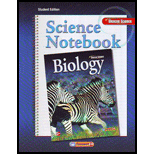
Concept explainers
To define:
The given vocabulary terms using a book or a dictionary.
Introduction:
The lineage that led to humans split off from the other African apes occurred sometime between 8 and 5 mya. Hominins include humans and all their extinct relatives. The evolutionary changes in hominoids led to bipedalism in hominins. The earliest fossils of species that show some degree of bipedalism are 6- 7 million years old.
Answer to Problem 3MI
Hominoid- It includes all non- monkey anthropoids such as the living and extinct gibbons, orangutans, chimpanzees, gorillas and humans.
Bipedal- It is the ability to walk upright on two legs.
Australopithecine- Theseare the hominins that lived in in east- central and southern part of Africa between 4.2 and 1 mya.
Explanation of Solution
The fossil transition from early anthropoid to ape is not distinct as very few fossils from the late Oligocene exist. The oldest hominoid fossil appears in about 25 mya at the beginning of Miocene. These hominoids retained some ancestral primate features.
Hominoids are the largest of the primates and they have the largest brain size in relation to their body size. They have semi- upright or upright posture and except for hominins they have arms longer than their legs. The oldest known hominoid fossil is from the genus Proconsul . It is considered to be the human ancestor. The hominins include humans and all their extinct relatives. Homo sapiens have evolved from hominoids.
Bipedalism is an important feature of hominins. It helped them to adapt to the new savanna environment.The first hominins that were truly bipedal were the australopithecines. They were small and had apelike brains and jaws. Their teeth and limb joints resembled those of humans.
Additional Science Textbook Solutions
Campbell Biology: Concepts & Connections (8th Edition)
Campbell Biology in Focus (2nd Edition)
Campbell Essential Biology (6th Edition) - standalone book
 Human Anatomy & Physiology (11th Edition)BiologyISBN:9780134580999Author:Elaine N. Marieb, Katja N. HoehnPublisher:PEARSON
Human Anatomy & Physiology (11th Edition)BiologyISBN:9780134580999Author:Elaine N. Marieb, Katja N. HoehnPublisher:PEARSON Biology 2eBiologyISBN:9781947172517Author:Matthew Douglas, Jung Choi, Mary Ann ClarkPublisher:OpenStax
Biology 2eBiologyISBN:9781947172517Author:Matthew Douglas, Jung Choi, Mary Ann ClarkPublisher:OpenStax Anatomy & PhysiologyBiologyISBN:9781259398629Author:McKinley, Michael P., O'loughlin, Valerie Dean, Bidle, Theresa StouterPublisher:Mcgraw Hill Education,
Anatomy & PhysiologyBiologyISBN:9781259398629Author:McKinley, Michael P., O'loughlin, Valerie Dean, Bidle, Theresa StouterPublisher:Mcgraw Hill Education, Molecular Biology of the Cell (Sixth Edition)BiologyISBN:9780815344322Author:Bruce Alberts, Alexander D. Johnson, Julian Lewis, David Morgan, Martin Raff, Keith Roberts, Peter WalterPublisher:W. W. Norton & Company
Molecular Biology of the Cell (Sixth Edition)BiologyISBN:9780815344322Author:Bruce Alberts, Alexander D. Johnson, Julian Lewis, David Morgan, Martin Raff, Keith Roberts, Peter WalterPublisher:W. W. Norton & Company Laboratory Manual For Human Anatomy & PhysiologyBiologyISBN:9781260159363Author:Martin, Terry R., Prentice-craver, CynthiaPublisher:McGraw-Hill Publishing Co.
Laboratory Manual For Human Anatomy & PhysiologyBiologyISBN:9781260159363Author:Martin, Terry R., Prentice-craver, CynthiaPublisher:McGraw-Hill Publishing Co. Inquiry Into Life (16th Edition)BiologyISBN:9781260231700Author:Sylvia S. Mader, Michael WindelspechtPublisher:McGraw Hill Education
Inquiry Into Life (16th Edition)BiologyISBN:9781260231700Author:Sylvia S. Mader, Michael WindelspechtPublisher:McGraw Hill Education





